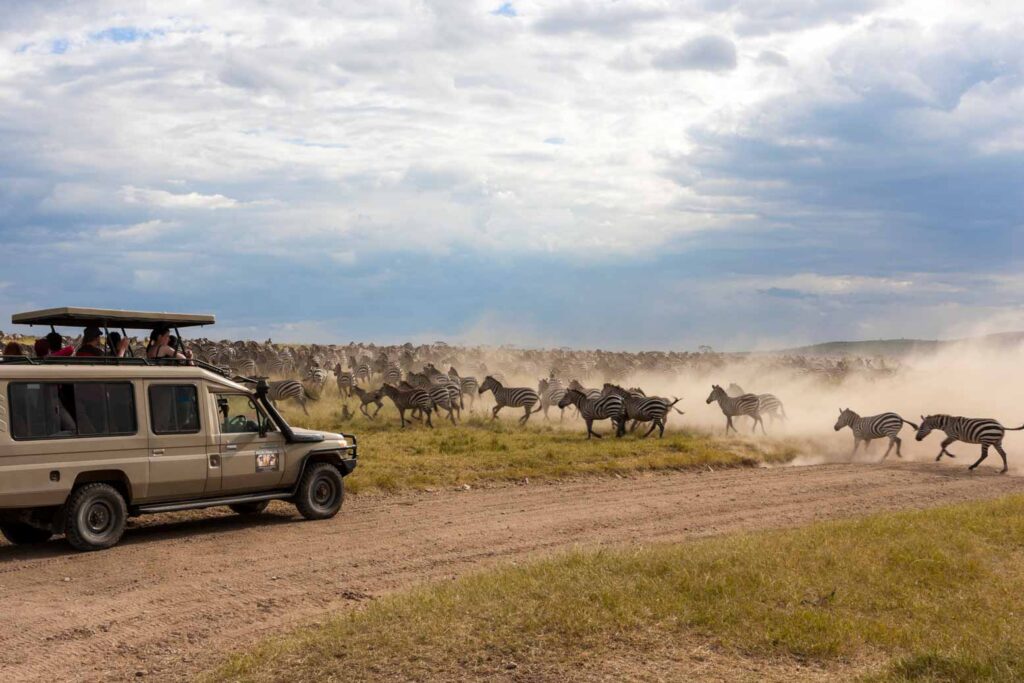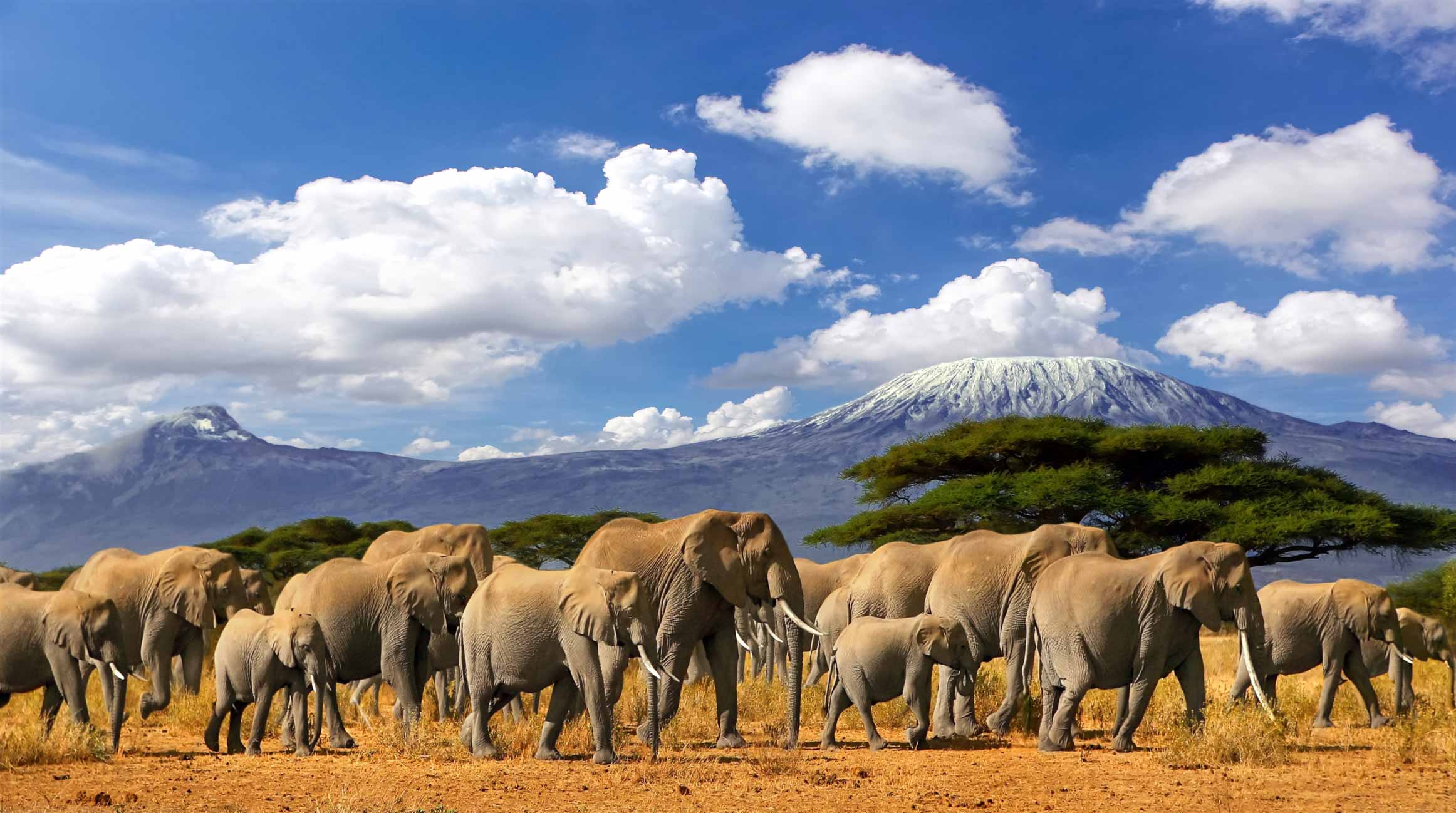Imagine standing on the edge of the Serengeti at sunrise, golden hues stretching endlessly across the horizon, the distant sound of hooves and the sight of wildebeest on their great migration. There’s an undeniable magic in the air, a feeling of pure awe and excitement that fills your heart as you witness nature at its most magnificent. Tanzania is a country that captures the essence of African adventure like no other, offering experiences that leave you both inspired and rejuvenated. From the towering peak of Mount Kilimanjaro to the sparkling shores of Zanzibar, Tanzania offers an array of landscapes, cultures, and experiences that make it a dream destination for travellers.
Whether you’re planning your first trip to Africa or you’re a seasoned explorer, this Tanzania Travel Advice will equip you with everything you need to know before embarking on a truly unforgettable Tanzanian adventure.
Discovering Tanzania: An Overview
A Land of Diversity: People, Language, and Culture
Home to over 120 ethnic groups, the majority of Tanzanians belong to the Bantu ethnic group, but you’ll also find Nilotic and Cushitic peoples, and even those of Arab and Indian descent along the coastal regions. This diversity is a source of pride and is reflected in the warm, welcoming nature of the people.
The official languages are Swahili and English, with Swahili being the most widely spoken. If you can learn a few phrases before your trip, such as “Habari?” (How are you?) or “Asante” (Thank you), you’ll quickly win over the hearts of locals. Engaging in the local language will enhance your experience and connect you more deeply to the culture.
Tanzania’s Stunning Geography and Climate
Tanzania’s geography is as diverse as its people. In the north, you’ll find the snow-capped Mount Kilimanjaro, Africa’s highest peak, standing proudly at 5,895 metres. The central region is dominated by the vast Serengeti Plains, where the famous Great Migration takes place. In the east, you’ll find the coastal city of Dar es Salaam, gateway to the crystal-clear waters of the Indian Ocean and the idyllic Zanzibar Archipelago. The western side of the country cradles Lake Victoria, Africa’s largest lake.
The climate in Tanzania varies depending on the region, but generally, it has a tropical climate with two distinct rainy seasons: the short rains from November to December and the long rains from March to May. The coastal regions tend to be hot and humid, while the northern and central regions are more temperate due to their elevation.
When to Visit Tanzania: Best Time for an African Adventure
Tanzania is a year-round destination, but the best time to visit largely depends on what you want to experience. The dry season, from late June to October, is the best time for wildlife viewing, particularly if you’re keen on witnessing the Great Migration in the Serengeti or tracking elephants in Tarangire National Park. The dry season offers the clearest skies and the most accessible roads, making it ideal for safaris.
If you’re aiming to climb Mount Kilimanjaro, January to March and June to October are the best months, as the weather is stable and the trails are less slippery. For beach lovers, the warm, sunny months between December and March are perfect for a tropical escape to Zanzibar or the southern coast.
Getting Around Tanzania: Navigating Your Journey
Domestic Flights and Road Transport
Given Tanzania’s vastness, domestic flights are a convenient option, especially if you’re short on time. Regional airlines like Precision Air and Coastal Aviation operate regular flights between key destinations, including Arusha, Zanzibar, and Dar es Salaam. If you’re heading on safari, many lodges also arrange private charters to remote airstrips.
However, if you prefer a more immersive experience, travelling by road is a fantastic way to see the country. Tanzania has a reliable network of buses that connect major towns and cities, but for the more adventurous routes, a 4×4 vehicle is recommended, particularly in remote areas like the Serengeti or Ngorongoro Crater.
Getting Around in Cities
In cities like Dar es Salaam or Arusha, you’ll find plenty of taxis and ride-hailing services like Bolt. Dala-dalas (shared minivans) are an affordable and authentic way to travel with locals, though they can be cramped and crowded. Always agree on a fare before getting into a taxi to avoid being overcharged.
What to Pack for Your Tanzania Adventure
Packing for Tanzania requires thoughtful preparation, as the country offers a range of environments—from humid coastlines to chilly mountain summits. Here’s a helpful list:
- Lightweight, breathable clothing: For the hot and humid coastal areas like Dar es Salaam and Zanzibar, pack light cotton or moisture-wicking fabrics that will keep you cool. Avoid synthetic materials, as they can trap heat and make you uncomfortable in the tropical climate. Long sleeves and trousers are also advisable in the evenings to protect against mosquitoes.
- Warm layers: Early mornings and evenings in the Serengeti or Ngorongoro Crater can be surprisingly chilly, with temperatures dipping as low as 10°C (50°F). A fleece jacket or a light sweater paired with a windbreaker will keep you comfortable during game drives or campfire dinners under the stars.
- Hiking boots: If you’re planning to climb Mount Kilimanjaro, proper, sturdy hiking boots are a must. Choose waterproof boots with good ankle support to help navigate the varied terrains, from rainforests to rocky inclines. Even for national parks like Arusha or Tarangire, a good pair of comfortable walking shoes will be useful for short hikes.
- A wide-brimmed hat and sunglasses: The African sun can be intense, especially when you’re out on safari or exploring the coast. A wide-brimmed hat will offer protection not just for your face but also for your neck, while polarised sunglasses will help reduce glare and protect your eyes from harmful UV rays.
- A reusable water bottle: Staying hydrated is crucial, particularly in the dry savannah regions or during long hikes on Kilimanjaro. Bring a reusable water bottle, ideally one with a built-in filter, to ensure you always have access to safe drinking water. Many lodges and campsites offer filtered water, allowing you to refill your bottle and reduce plastic waste.
- A swimsuit: Whether you plan to relax on Zanzibar’s white sandy beaches or take a dip in a lodge pool after a dusty day on safari, a swimsuit is essential. For those heading to Mafia Island, it’s also perfect for snorkelling or diving with whale sharks.
- High-SPF sunscreen and insect repellent: With Tanzania’s strong sun, especially near the equator, high-SPF sunscreen (at least SPF 30) is necessary to prevent sunburn. Additionally, insect repellent with DEET or natural alternatives will help protect you from mosquitoes, especially in areas where malaria is a concern. Don’t forget to reapply both after swimming or heavy sweating.
- A good camera or smartphone with plenty of storage: Tanzania’s landscapes and wildlife are jaw-dropping, from the wide plains of the Serengeti to the lush greenery of Lake Manyara. Whether you’re capturing a lioness on the hunt or the pastel hues of a Zanzibar sunset, make sure your camera or phone has ample storage or bring extra memory cards. A lightweight zoom lens can be particularly useful for wildlife photography.
Top Experiences You Can’t Miss in Tanzania

- Witness the Great Migration in the Serengeti: Every year, millions of wildebeest and zebras thunder across the Serengeti, in one of the most spectacular wildlife events on the planet.
- Climb Mount Kilimanjaro: The tallest free-standing mountain in the world, Kilimanjaro offers several trekking routes, each varying in difficulty. Reaching its summit is an achievement like no other.
- Explore Ngorongoro Crater: This UNESCO World Heritage Site is a natural wonder teeming with wildlife, from rhinos to lions, in a spectacular setting.
- Relax on Zanzibar’s Beaches: The pristine white sands of Zanzibar are a paradise for beach lovers. Don’t miss Stone Town, a UNESCO World Heritage Site, rich in Swahili culture and history.
- Discover the History of Bagamoyo: Once the heart of East Africa’s slave trade, Bagamoyo is now a quiet coastal town with historical ruins and a rich Swahili heritage.
Top Tips for Travelling in Tanzania
- Visa Requirements: Most visitors to Tanzania will need a tourist visa, which can be obtained either online through the Tanzania eVisa system or upon arrival at major airports, such as Julius Nyerere International Airport in Dar es Salaam and Kilimanjaro International Airport, as well as key land border crossings. The visa on arrival costs around $50 for single entry (for most nationalities), while citizens from the United States may be required to pay $100 for a multiple-entry visa. It is advisable to apply for the eVisa at least a week before your departure to avoid potential queues and delays at the airport.
- Currency: The local currency is the Tanzanian shilling (TZS), though US dollars are widely accepted in tourist areas. Be sure to carry cash, as ATMs can be scarce in remote areas.
- Health Precautions: Tanzania is a tropical country, and malaria is present in many regions, particularly in lower altitude areas and along the coast. To protect yourself, consult your doctor or a travel clinic about taking anti-malaria medication before travelling. You should also use insect repellent, wear long sleeves in the evenings, and sleep under a mosquito net where available. It’s also a good idea to carry your own insect repellent if you’re heading into national parks or more rural areas.
- Vaccinations: A yellow fever vaccination is required if you are travelling to Tanzania from a country where yellow fever is endemic or if you’ve transited through such a country. You may be asked to present your Yellow Fever Vaccination Card at the point of entry. It’s also recommended to be up to date on routine vaccines such as Hepatitis A, Hepatitis B, Typhoid, and Tetanus.
- Respect Local Customs: Tanzania is a conservative country, particularly in rural areas. Dress modestly, especially when visiting villages or religious sites. Always ask permission before photographing people, as some may consider it disrespectful.
Exploring Tanzania with Visit Africa
At Visit Africa, we believe that exploring Tanzania is more than just a holiday—it’s an experience that will leave you with lifelong memories. Whether you’re dreaming of a luxury safari in the Serengeti, a cultural tour through Maasai villages, or a relaxing getaway to Zanzibar, our team of expert guides and travel planners can create a personalised itinerary tailored to your desires.
From the moment you step off the plane to the day you leave, you’ll be guided by knowledgeable locals who are passionate about sharing the beauty and culture of their homeland. We prioritise responsible and sustainable tourism, ensuring that your journey not only supports local communities but also preserves Tanzania’s stunning natural landscapes for future generations.
So why wait? Tanzania is calling, and the adventure of a lifetime is just a booking away. Explore with Visit Africa, and let the magic of Tanzania captivate your heart.














